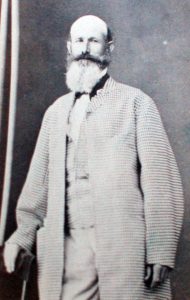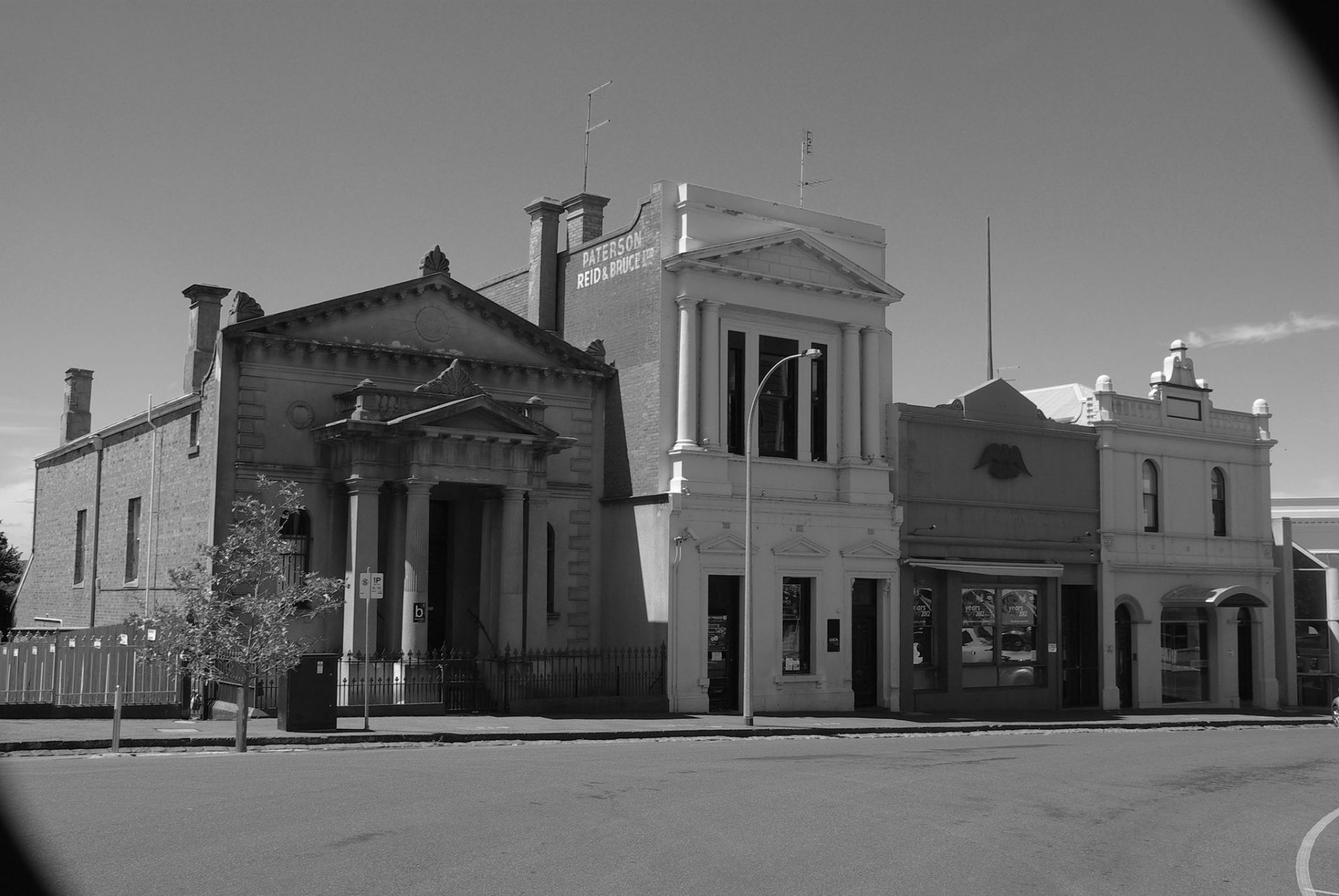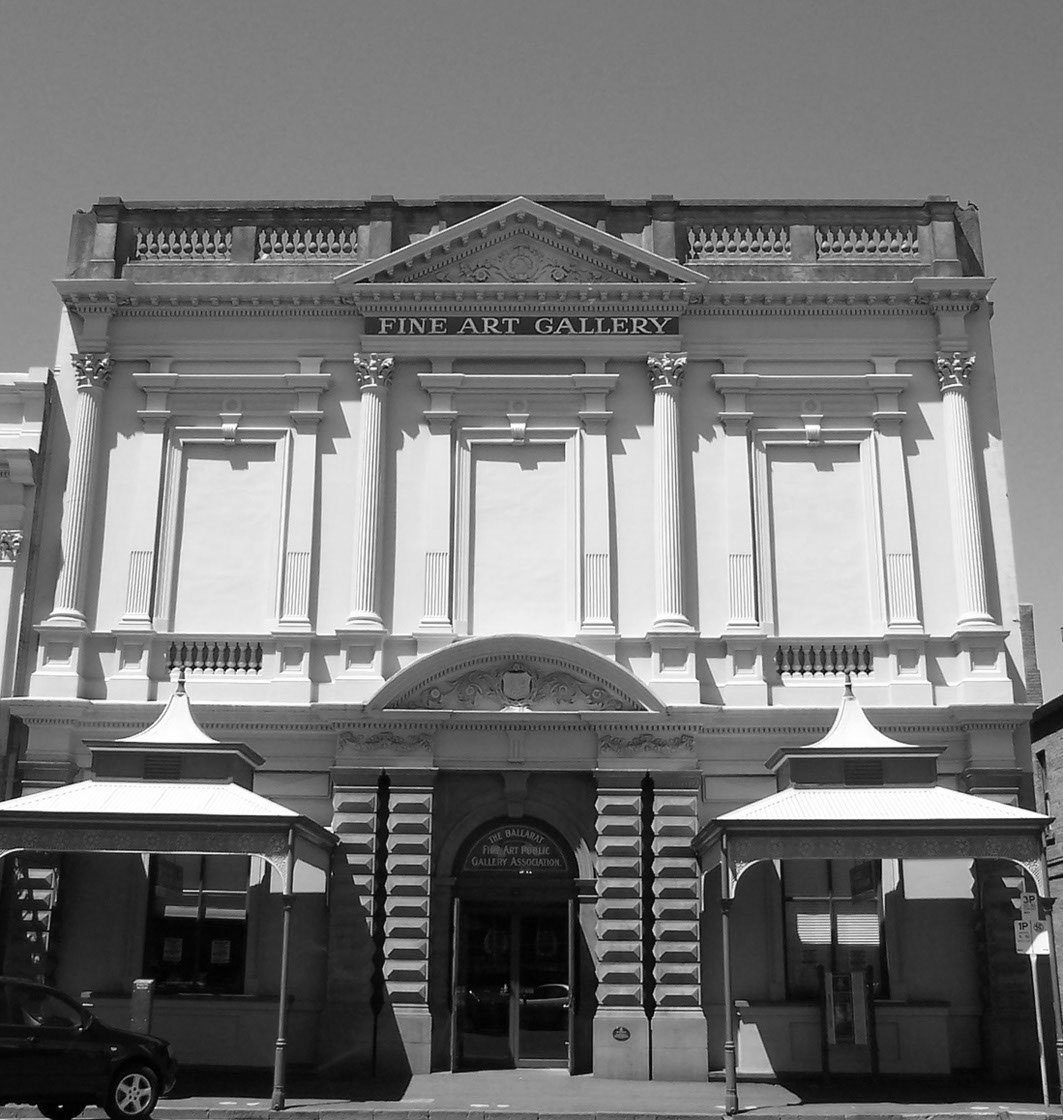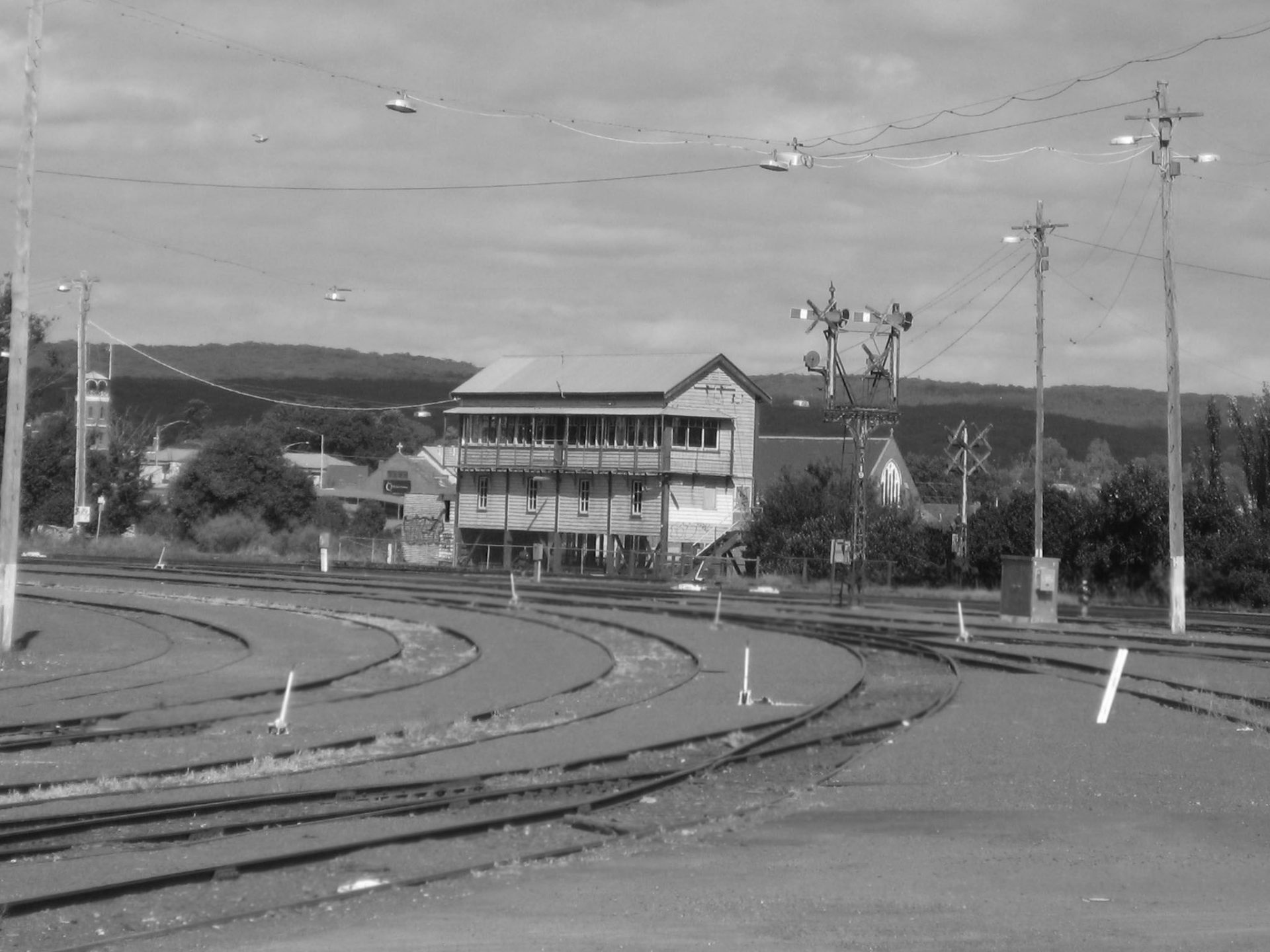Eureka: A Multicultural Affair
Dorothy Wickham & Clare Gervasoni
The Victorian goldfields boasted a community comprised of a large number of different nationalities. People held multifarious political and religious views. It is therefore not surprising to discover the large number of ethnicities involved at the Eureka uprising. The following list was compiled from The Eureka Encyclopaedia (Corfield/Wickham/Gervasoni) and Women of the Diggings: Ballarat 1854 (Dorothy Wickham). Information on migration from countries of origin is located after listing of participants, and draws on material from From Many Places (Immigration Museum).
AMERICA
 John Clarke, John William Emery, Charles Derius Ferguson, James McGill, John Josephs (tried for treason), Hartley, Ferguson, Carey, Nealson, Burnete, Melody, Shanahan
John Clarke, John William Emery, Charles Derius Ferguson, James McGill, John Josephs (tried for treason), Hartley, Ferguson, Carey, Nealson, Burnete, Melody, Shanahan
Frank Carey was born at New York, America. He ran a restaurant in partnership with John Kelly near Mrs Hamner’s Theatre at Red Hill in 1854, and in September of that year Carey was imprisoned for six months for sly grog selling, but was given a conditional pardon after one month. Apparently Carey would not bribe the officials. Carey was later pardoned, apparently to mollify the Americans. Carey was a participant in battle. [Ref: EVVP; ER; BPD; EUR]
John Clarke was an American digger. On the evening of 16 August 1854 he entered the Albion Hotel on the Eureka Goldfield and shot John Borwn in the head. He then started playing euchre and spoke threateningly. After some time Clarke again pulled out his revolver and fired indiscriminately. The publican, Mr Berend, crawled from his bedroom stating that he was shot. The next day Clarke was committed for trial on the charge of murder.
John William Emery was a supporter of Bentley. He was a part owner of the Bowling Alley associated with Bentley’s Hotel. Emery was Witness No. 23 at the Board of Enquiry into Scobie’s Murder. He also gave evidence at the enquiry into the burning of Bentley’s Hotel. Emery claimed compensation for the loss, by burning, of his bowling alley and saloon. The amount of £600 was allowed. In 1856 the Star newspaper notes Emery running the Washington Hotel in Main Rd. In July 1856, Emery had just returned from Melbourne, after securing the services of several eminent artists, who performed every evening from 6pm to 10pm. The Washington Hotel restaurant was open from 6am to 12pm. Emery’s birthplace was Boston, America. [Ref: EVVP; EUR]
Charles Derius Ferguson built Ballarat’s Adelphi Theatre, and worked for Cobb and Co. He was a Californian Ranger from Ohio who witnessed Captain Wise’s shooting, and was one of the few Americans taken prisoner after being arrested by Corp. Mole. Ferguson was chained to Seekamp in gaol, before Dr Kenworthy (pictured above right) obtained his release. Later Ferguson said he had the foresight to dispose of his colt revolver and bowie knife before surrendering. He also said that Nichols and Kenworthy had supplied a change of clothes to make identification more difficult. Carboni speaks well of Ferguson. Later Robert O’Hara Burke approached Ferguson to take the role of foreman of the Burke and Wills Expedition, which he accepted. Ferguson joined the goldrush to New Zealand, and returned to the USA in the 1880s, living in the mid-west. In 1887 he gave an account of the Eureka encounter. [Ref: MAE; SA; BPD; EUR; ES]
AUSTRALIA
Thomas Dignam (born NSW, tried for treason), Charles Howes (born Tasmania,) William Quinlan (born NSW, killed), Montague Miller (born Tasmania).
CANADA
Robert Julien (died of wounds), Charles Henry Ross (killed), John Robinson, Thomas Budden, Edward Henry Majenty Mount, Edward Macarthur (served in Canada), Charles MacMahon (served in Canada), Robert Nickle (served in Canada), Charles Pasley (served in Canada), Henry Chapman (had lived in Canada), Samuel Douglas Smyth Huyghue, Scott.
Thomas Budden was a Canadian digger who lived on Bakery Hill during Eureka, and witnessed the digger meetings. Budden was a schoolmate of Ross. Budden was a witness at the Goldfields Commission of Enquiry. [Ref: ER]
Charles Doudiet was born 1832 in Geneva, Switzerland, and arrived in Australia, via Canada, on the Magnolia. Doudiet made eye-witness artworks of Ballarat and the Eureka riots. If not in the Stockade, he was thought to have been on the scene soon after and helped to carry Captain Ross, also a Canadian, to the Free Trade Hotel where Ross died of his wounds. He left Ballarat for Canada. [Ref: TSPD; SIPA]
Samuel D. S. Huyghue was a Canadian artist who witnessed the Eureka battle from the Government Camp, drew Eureka flag, and wrote his reminiscences. Huyghue prepared a plan of the military attack on the stockade. Huyghue was Chief Clerk to Resident Warden at the Government Camp. In his reminiscences stated that those in the Camp never undressed and slept little day after day durring the period of unrest. Hughue was present at the Camp throughout the Eureka unrest. In 1857 Huyghue’s quarters at the Government Camp was a tent. [Ref: MAE; GCB; MAE; EUR; ER]
Captain Charles Ross was born c1827. He was a Canadian and a gold digger who was a participant in the Eureka battle. Ross seconded Mr Murnane’s motion at the Bakery Hill meeting of 29 November 1854. Ross was said to have asked two digger’s wives to make the Southern Cross flag, the flag of the diggers. Carboni called him the standard bearer. After the Bakery Hill meeting he hoisted down the Southern Cross and headed the march to the Stockade.
Ross was shot in the groin during the battle, but escaped and was in hiding. He was later carried to either the Star Hotel or the London Hotel on a stretcher, and died there later that day, on 5 December 1854, as a result of gunshot wounds. He was buried at the Ballaarat Old Cemetery in the diggers’ enclosure. At the time of his death he was aged twenty-seven years. [Ref: ER; OE; MAE; ES; TES]
Scott was a Canadian who Arthur Arnold says was killed during the Eureka battle. [Ref: EVVP]
CHINESE
Howqua was Chinese and lived at Ballarat in 1854. He wanted to be made commissioner since there were Chinese on the goldfields. [EUR]
CORNWALL
Peter Ellis, John Penneluna, Joseph Penrose, James Wearne.
CORSICA
See France.
DENMARK
Erick Jorgenole Rasmussen.
ENGLAND
James Ashburner, Alfred Black (Ballarat Reform League), George Black (Ballarat Reform League), William Harvey Boase, William Walton (Baron) Bell, James Beattie (tried for treason), George Clifton (killed), Thomas Cox, Frederick London Coxhead (died of wounds), Samuel Green (killed), John Hanlon Knipe, James Montague Smith, John Wellesley Thomas, James Wiburd (or Wyburd), William Wood.
FINLAND
Isaac Mattson.
FRANCE
Delprat, Antoine Julien Fauchery, Gillot, Le Pere, Peter Priaulx, Thomas Decueur.
Le Pere Delprat (Duprat) was a respected French goldminer on the Ballarat goldfield. Carboni says Duprat was in the Eureka Stockade. [Ref: ES]
Binney was a storeowner in partnership with Gillot (possibly Guillerot who was mentioned in Eugene von Guerard’s diary), who was a Ballarat resident in 1854. He had known Carboni at Canadian Gully and was happy to see Carboni alive after the battle. Binney sold Carboni’s book The Eureka Stockade.
James Harrison and his wife, Mary Ann Stevenson were both lace makers and originated from Nottingham. They married at St. Mary the Virgin church in Dover, England on 15 December 1840 and a son was born to them in Calais, France. This son, James, joined them in Ballarat when he was about fifteen years old in 1858. A daughter, Mary Ann, was born to them in Ballarat in 1854. Mary Ann and William were also born in Ballarat in 1856 and 1858 respectively. James Harrison died on 27 June 1880, his address at the time being Humffray Street, Ballarat East. He is buried at Ballaarat New Cemetery. There is no record of whether he fought at Eureka, but he was in the vicinity at the time. [Ref: PR]
Le Fronzis Romeo was born in French Corsica in 1839, but probably originated from Siena, Italy. His correct name was De Romeu. His French Corsican family had blood ties with Bonaparte. Romeo shared a tent with the Vennick and Peters. The tent was 150-130 yards north of the Stockade. Romeo was one of 114 arrested after the Eureka battle, and one of 11 foreigners arrested. He left a French Man-O-War at Melbourne about 1851 and was then aged 16 years. He married Elizabeth Hyder at Creswick in 1874. Romeo died in 1910 and is buried at Creswick cemetery. [Ref: SIPA]
GERMANY/PRUSSIA
Henry Brandt, johann Brandt, Edward Thonen (killed), William Augustus Heise, Thomas Henfield (killed), John Hafele (killed), Adolphus Lessman, John Herman Frederich Spanake, Herman Steinman, Frederick William Tauschke, Frederick Vern, Warnecke, Conrad Zillies.
Henry Brandt lived at Golden Point and was a good friend and partner of Wiesenhaven. He gave evidence under oath at the Board of Enquiry into the burning of Bentley’s Hotel. [Ref: EVVP; GPA]
Johann Brandt was a German tavernkeeper with Wiesenhavern and a Ballarat resident in 1854. He was described as, “One of those short, broad shouldered sound dogg-headed Germans, with determined look.”
John Hafele was born at Wurtenberg, Germany. He was a digger and blacksmith who was killed during the Eureka battle. It is said that the top of Hafele’s skull was taken off by Lt Richard’s sabre. Hafele is listed on Lalor’s list of casualties only. [Ref: MAE; ES; OPA]
Adolphus Lessman was born at Hanover, Germany, in 1828, and came to Australia after the Schleswig-Holstein War of 1848. He was a participant in the Eureka battle who was slightly wounded. Lessman was Lieutenant of rifleman. During the procession to mark the second anniversary of the Eureka Stockade Lessman carried a garland of flowers. He died on March 1869 at Talbot, aged 41 years. [Ref: GPA; TES]
Frederick Vern was said to be born at Hanover, Germany and working on the Eureka Lead in 1854. He gave evidence at the Board of Enquiry into the burning of Bentley’s Hotel. Vern was witness number thirty-three in the Board of Enquiry into Scobie’s murder, and he loaned the Diggers’ Committee £100 to defend McIntyre and Fletcher. Vern was a friend of Robert Monteith and they were working together in a deep hole, one hundred and thirty-two feet deep at Dalton’s Flat. Vern proposed a Ballarat Reform League resolution at the meeting on Bakery Hill on 29 November 1854, and was accused of Treason after the Eureka battle. He promised a German brigade with rifles, but they never arrived at the Stockade. Vern was sentenced to three years imprisonment in 1856 for rioting. [Ref: EVVP; ER; EKA; OE; MAE; EUR; ES; EFFOSB; SES; TES]
Conrad Zilles was born 1825/26 at Maintz, Hesse-Dormstadt, and arrived in Victoria on 21 August 1853. It is thought that he settled around Creswick c1853-c1858, moving to Linton c1866-c1881, and then Ballarat c1881-1887. Zilles was present at the Eureka battle, and according to his obituary in the Ballarat Star newspaper he was one of the last to leave. Zilles was one of those who tried to locate the site of the stockade in 1884. [Ref: GPA; Courier 26.7.1884]
Warnecke was a German blacksmith at the Eureka Stockade.
GREECE
Natale D’Angri (born to Italian parents).
GUERNSEY
Jean (John) Le Maitre.
HOLLAND
Cornelius Peters, Jan Vennick (tried for treason).
Jan Vennik was a Dutchman who shared a tent with Peters and Romeo, 300 yards from the stockade. He was known as Captain because of his red trousers. He was also distinctive because of his pierced ears, several scars, and he had lost the end of his thumb on the right hand. Vennick was arrested on 3 December 1854, accused of treason but acquitted. Giving evidence for Vennik at the State Treason Trials, Peters said he was a mate of the prisoner and they had worked on Saturday so that he could not be drilling with the miners. During the Eureka battle the three men were woken by a man named Bloemb calling out that something was up. Peters recalled that “bullets were flying over the tent in all directions. We had no firearms in our tent. We were called out by the horse police, saying if we did not come out they would shoot us where we were. Vennik went out in his red drawers and held a horse for the police. “I am a Dutchman and so is the prisoner. We all wear red trousers. There are a good many Dutchmen at Ballaarat”. We then came out, and were handcuffed. A policeman, after he was handcuffed, struck Vennik with his sword on the ear and nearly cut it off, and then struck him two or three times on the head with the sword. The prisoner was in our tent all night. I was discharged afterwards, but Vennik was kept. The prisoner was struck with the drawn sword after he had been handcuffed.” [Ref: MAE]
IRELAND
Hugh Brady (Ballarat Reform League), James Brown (died of wounds), Michael Canny, John Crowe (killed), Patrick Malone Curtain, Michael Callinan, John Dunlop, John Dynan, Martin Diamond (killed), John Thomas Dalton, George Donaghey (killed), Henry Gittins (killed), John Esmond, Timothy Hayes (tried for treason), Patrick Daniel Howard, John Hynes (killed), Peter Lalor, Morgan Lee, Edward Quinn (killed), Michael Hanrahan, John Lynch, Michael Gleeson, Thaddeus Moore, (killed), Michael Tuohy (tried for treason), John Torpy, Michael O’Neil, E. O’Mahony, Michael O’Brien, Michael Mullins (killed), Edward McGlynn (killed), John Manning (tried for treason), William John Madden, Abbott Lewis, Patrick Sheedy, Luke Sheehan, George Gilmore, Matthew Gavin.
ITALY
Joseph Barberis, Antonio Capuano, Raffaello Carboni (tried for treason), Oravalno, Antonio Polinelli, Francesco Rappacioli, Francis John Romeo (Corsica).
Joseph Barberis was born in Genoa, Italy in 1827. He was the son of Charles Barberis, a parliamentary secretary. Barberis was fluent in English, Spanish, Italian and French languages. He migrated to South America at an early age, then the lure of the Californian gold rushes attracted him. He came to Australia in 1851 and travelled to Ballarat to the goldfield there. According to his obituary, he was a spectator at the Eureka battle and was one of the few who knew the whereabouts of the shaft down which Peter Lalor’s amputated arm was hidden. He also knew those who knew where the amputated arm was buried. Barberis was engaged in mining at the Jim Crow Diggings for some years, before he sailed to Shot-over River, New Zealand. He then went to Queensland, New South Wales, and then returned to Ballarat and Daylesford. In Ballarat he started the hotel business. He went to Echuca where he was prominent in civic affairs, becoming a member of the council in 1887. He was re-elected in 1890. … While in Ballarat Mr Barberis was a spectator of the Eureka Stockade riot events, and was one of the few to know where the famous Peter Lalor was hidden in a shaft, and helped convey food to him. He also was one of those who knew where the rebel’s arm had been buried in the ground … [Echuca 1 August 1911]. Barberis died at his residence in Collier Street, Echuca, in Victoria in 1911 aged 84 years. [Ref: PR; SIPA]
Francesco Rappacioli was born in 1831 at Piacenza, Italy. He travelled to Australia on the Marco Polo. Rappaciolo was possibly at Eureka. He had land in Daylesford near the Stoney Creek Falls, next to Giovanni Giani. He died in 1906 in New South Wales.
MAURITIUS (REPUBLIC OF)
James Johnston arrived in Australia aboard the Hurricane. He was appointed Assistant Gold Commissioner for the Gravel Pits. Johnstone sat on the bench at the Scobie inquest. He dissented from other two on bench, as he did not believe Bently and others should be honourably discharged.
Johnstone married Margaret Brown nee Howden at Geelong in 1854. They had 15 children nine of whom survived. He died aged 59 years in 1885 in Victoria. Birthplace, Mauritius. [Ref: EVVP; MAE]
NORWAY
John Forssman.
NOVA SCOTIA
John Robinson was born in Nova Scotia. He participated in the Eureka Affair.
Robert Julien was born c1820 in Novia Scotia, Canada. He was wounded in the Eureka battle, and died on 14 January 1855 in Victoria from gunshot wounds sustained at the battle. He was aged 34 years. Julien was buried in the Ballaarat Old Cemetery. [Ref: MAE; EUR; ES]
POLAND
Flatow Manasha was born in Poland to a Jewish family in 1818, and arrived in Australia in 1853. He was one of ten people arrested on 26 October 1854 for the burning of Bentley’s Eureka Hotel. The case was dismissed. Flatow was paid £27.4.0 in December 1854 for shoes for sailors, related to the military at Eureka. Flatow died in Geelong in 1885. [Ref: EVVP; EUR]
VPRS 4444 Vol 1
20 Aug 1856
Buninyong Court Petty Sessions
Wilfuly destroying a tent
Flatow V Parry
Manastra Flatow
“I am a miner and reside on the Poor Man’s Gully. Between 2 and 3 o’clock on Sunday morning last the 17th August I was awoke by a loud noise. The door of tent was (burst ?) in. The prisoner Ebaneza Parry came in and said “where is bloody Yorky, Flash Yorky?”
The prisoner then tore open the tent where I was laying in bed and threw a bottle, pieces of stone and quartz at me. The prisoner then went away and came back into may tent and jumped upon me – I saw the prisoner knock the tent down. I gave information to the police and had the prisoner taken into custody.
Knew the prisoner around 18 months. They were friends. Had had a quarrel about a week before this.
PORTUGAL
Antonio Francesco Nida.
RUSSIA
William Emmerman (killed).
SCOTLAND
Alfred William Crowe, Thomas Kennedy, Hugh Meikle, John Robertson (killed), Henry Sutherland, Alexander McLaren, Robert Watson.
SPAIN
Pergo.
SWEDEN
Jacob Soranson, Andrew Swanson, Maurice Linquist.
SWITZERLAND
Charles Doudiet, Charles Louis Sublet, Henry Alexander De Brot.
UNITED STATES
James McGill, John Josephs (tried for treason), Charles Kenworthy, George Hartley, Charles Derius Ferguson, Francis Carey, Nealson, Burnete, William Melody, George Francis Train.
WALES
John Basson Humffray (Ballarat Reform League), Llewellyn Rowlands (killed).
WEST INDIA
John McFie Campbell (tried for treason).
MIGRATION PATTERNS
AUSTRALIA
In 1854 the majority of Australian born members of the community were in the minority, and were children of convicts or pre-gold free settlers.
CANADA
The first significant arrival of Canadans to Australia was after the 1837 rebellions in Canada when 150 Canadians were transported as convicts. The goldrushs of the 1850s and 60s attracted significant numbers of Canadians. It is believed Canadian Charles Ross designed the Eureka Flag.
CORNWALL
Many Cornish miners immigrated to South Australia before the discovery of gold where they worked at Burra and other mining towns. The discovery of gold in Victoria in 1851 lured many Cornish miners to Victoria, both from South Australia and Cornwall.
DENMARK
The Schleswig-Holstein wars between Denmark and Prussia resulted in significant numbers of Danes arriving in Australia during the 1850s. The Danes interested in obtaining land and many sought gold on the diggings of Victoria.
ENGLAND
The earliest English residents in Australia were convicts or soldiers. The English brought their system of Government to Australia. Before the discovery of gold assisted passages attracted a number of immigrants. Significant number of English arrived in Victoria lured by gold.
FINLAND
The first Finn to arrive in Australia was a member of Joseph Banks scientific staff aboard The Endeavour. Many Finns of the Victorian goldfields were sailors who jumped ship and went to the goldfields in search of gold.
FRANCE
The first French in Australia were convicts or free settlers who fled France of the French Revolution of 1789. A significant number of French arrived as a result of the Victorian goldrushes. Antoine Fauchery’s photography and book “Letters From a Miner in Australia” recorded interesting aspects of life on the goldfields.
GERMANY/PRUSSIA
The Germans were the first organised group of non-English speakers to come to Australia. Before the Unification of Germany in 1871 Germans had lived in a patchwork of provinces. Early German arrivals in Australia, mainly farmers and tradespeople, came from Brandenburg, Silesia and Posen. After the revolution of 1848 a number of middle-class Germans arrived from southern provinces including Bavaria. Large numbers of Germans were present on goldfields such as Ballarat, Bendigo and Talbot.
IRELAND
Many Irish left their homeland due to the Potato Famine. Many arrived in Australia as convicts or as part of a scheme of assisted passage.
ITALY
A number of Italian speakers from Northern Italy and the Italian speaking Swiss Canton of Ticino arrived in Australia in search of gold. Many of these immigrants first settled at Jim Crow (Daylesford) where around 10 percent of the population spoke Italian in the late 1950s. Raffaello Carboni was used to translate the message of the Ballarat Reform League to non-English speaking residents of Ballarat. He wrote the only eye-witness account of Eureka.
SWEDEN
Significant numbers of Swedes arrived in Australia during the goldrushes. They sought land, employment and gold.
SWITZERLAND
The first Swiss citizen to set foot in Australia was a painter, John Waeber, who was part of Captain James Cook’s third voyage to Australia in 1777. The Australia goldrushes of the 1850s and 1860s led over 2,000 Italian speaking Swiss to leave the Canton of Ticino and Romanisch speaking Canton of Graubunden in search of gold. German speaking Swiss nationals also arrived and were instrumental in establishing Victoria’s wine industry.
UNITED STATES
Many Americans on Victoria’s goldfield had experienced the Californian goldfields of 1849 bringing with them technical experience for winning gold from the ground.
If you would like to comment or contribute on this article please email info@ballaratheritage.com.au
Further information on the Eureka Stockade can be found in the wiki “eurekapedia.org”, or the books the award winning The Eureka Encyclopaedia, Women of the Diggings: Ballarat 1854, The Eureka Flag, Shot in the Dark, or Eureka from Mount Alexander Mail (newspaper).








